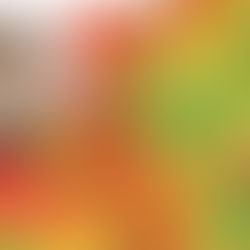The Digital Age for Art – Opportunities with Caution
- Maria Makurat
- Nov 23, 2020
- 3 min read

Image: Gage Walker
Whether it’s Tik Tok, YouTube, Instagram or Facebook, the digital age offers many different platforms for many types of artists. No longer are artists – be they singers, painters or writers- necessarily bound to the physical world only. They can express and post their art online, engage with a large audience and even make spontaneous connections with other artists overseas. In the past months I have been paying much more attention to galleries offering online tours and collaborations, while also trying to organise mini virtual tours of my own art. This comes out of the belief that this new trend that is here to stay for - at least - the near future.
Being an artist myself, I still prefer painting on canvas but also use online platforms to communicate with other artists and share my passion. At first, I was sceptical of other artists because there is a huge mass of art being shared online that makes you wonder if people still go to physical galleries or museums. Then Covid-19 came and I believe now, more than ever, that galleries, fashion houses and private artists can benefit from digitisation. This is not only to share their own work, but also to inspire others who are at home, maybe feeling desperate or lonely, offering people some soul-fulfilling items to help them get through this turbulent year. It may sound cliché, but I believe it holds some truth. I experienced this myself when I collaborated with other artists to create art pieces together for our online platforms. This gathered a lot of positive feedback and gave me a different experience of collaboration.
As I was trying to scan the October issue of Harper’s Bazaar in the train I read their “Only Connect” project which fascinated me greatly. One of those “Only Connect” projects was the May issue for the Spanish Bazaar which was created during the lockdown. The Harper's staff shot the cover for the magazine using FaceTime with Lily Aldrige at her home in Nashville. They also asked Helena Christensen to take a self portrait for another Bazaar cover using Zoom. Such presentations would not have been possible before digitisation. The digital age for art – a fashion magazine in this case – has brought about new types of creativity that even allowed people from different parts of the world to connect during a very difficult time.
Another project that I followed during lockdown was the online livestream campaign by Gucci called “Epilogue”. Fashion shows are exclusive, the photoshoots are always presented perfectly without the public really knowing how they came about. The live stream started in the morning where I also logged in and kept an eye on the live chat, an interesting decision of Gucci's part. The campaign was filmed by directors Damiano D’Innocenzo and Fabio D’Innocenzo at Rome’s Palazzo Sacchetti and Campo Boario. Several cameras were placed around the site which automatically took turns going live showing how the staff were working. Viewers were able to check-in and check-out whenever they wanted to see how such a photoshoot is done. Is this a digitisation of art? Perhaps to the extent that “fashion” and all other mediums involved are channelled through a digital realm, which makes it possible for everybody to watch from home and maybe even be inspired.
Artists had and still are improvising during this difficult time. Ways to connect, keeping the public interested and motivated, yet trying to stay true to old values, is a tricky task. It can be said for sure that digitisation is influencing the landscape of art, however, I believe it is more a different way of communicating than art itself being changed. One cannot replace viewing the Mona Lisa in real life. One has to see the painting in person to experience it fully. Whether it is fashion or paintings, 2020 seems to have nudged people to communicate and collaborate even more strongly using the digital realm which is a development that will likely continue beyond this crisis. It is not about replacing the physical art world with the digital. It is rather an additional means of presenting creativity and exhibitions without substituting reality, by utilizing alternative opportunities to collaborate with other artists globally, creating something new that might be an inspiration for anyone regardless of where they are.

































